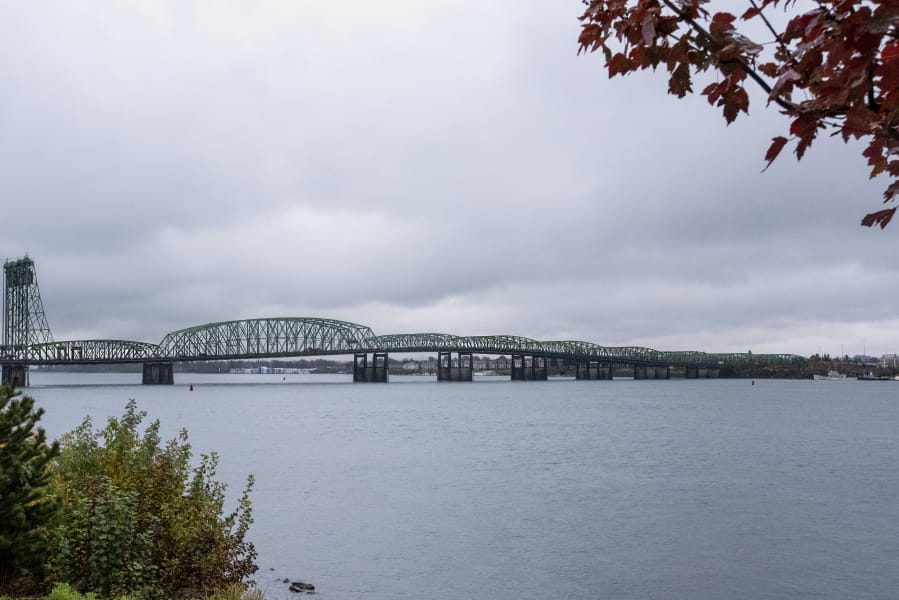The Interstate Bridge Replacement Program’s Executive Steering Group held its virtual first meeting Friday morning, outlining its role in the project as well as the process for creating a separate Community Advisory Group — and laying out an ambitious timetable for both plans.
“There’s a sense of urgency,” said Oregon Department of Transportation director Kris Strickler.
The Interstate Bridge Replacement Program’s objective is exactly what it says in the name: design a replacement for the aging twin-span drawbridge that carries Interstate 5 over the Columbia River. It’s the second major attempt at a replacement following the defunct Columbia River Crossing project.
The program kicked off last year after Washington and Oregon allocated a combined $50 million to establish a new joint project office, with a team that will draw input from multiple committees and work groups during the design process.
The first of those groups is the bistate legislative committee, which began meeting last year and will give the project officials guidance from state lawmakers. The new 12-member executive steering group is intended to provide input from regional governing bodies and public agencies.
The group includes representatives from Vancouver, Portland, C-Tran, TriMet, Oregon Metro, the Southwest Washington Regional Transportation Council, the Washington and Oregon Departments of Transportation and the Ports of Portland and Vancouver.
It also includes the two co-chairs of the interim community advisory group, which is intended to represent groups of stakeholders throughout the region. Project administrator Greg Johnson said the team also aims to establish an equity group.
That’s a lot of work group infrastructure to set up, Johnson described the various groups as necessary to avoid any “late surprises or folks that feel like they aren’t part of the process” – issues which he and some of the steering group members suggested contributed to the failure of the CRC.
Johnson began by outlining the work performed so far and the key deadline for the early stages of the project: Sept. 30, 2024. That’s when Oregon and Washington will have to start paying back $140 million in federal funding that went to the scuttled CRC, unless the two states can show substantial progress toward a new replacement bridge.
“We cannot miss that date,” Johnson said.
Project team communications manager Lisa Keohokalole Schauer introduced a tentative plan for the community advisory group, and said the team hopes to put out applications at the start of December and close them ahead of the holidays, with the goal of having the group formed ready to hold its first meeting in mid-January.
Keohokalole Schauer outlined a list of 19 interest groups that the community group would seek to represent, including environmental groups, neighborhoods, active transportation, labor, BIPOC organizations and economic development groups.
The group is envisioned to have about 25 members, she said, about 80 percent of whom would live in Southwest Washington or the Portland metro area. The roster could expand past 25, she said, but the goal would be to try to find members who can represent multiple perspectives. If necessary, the group could form subcommittees with additional members to tackle single issues such as active transportation.
The executive group members didn’t voice any major objections to the proposed groups on the list, but several members raised concerns about geographic representation, particularly in areas farther away from the bridge.
Metro Council president Lynn Peterson said she wanted to make sure the list covered interest groups throughout the entire Metro region, such as businesses along the State Highway 26 and Interstate 205 corridors in Oregon that could be impacted if a new bridge sparks changes to traffic patterns on the overall freeway system.
“It created a lot of angst” when those groups felt that they had been left out of the CRC planning process, she said.
TriMet general manager Doug Kelsey pushed for an even broader lens, arguing that the group should include representation for interest groups such as trucking agencies that operate along the entire I-5 corridor.
WSDOT Secretary Roger Millar suggested trying to examine the list of interest groups from a geographic viewpoint first, and Strickler added that the CRC process spent too much time focusing on the physically closest impacts of the project.
“A lot of folks are really going to bring their individual issues, but if we ask them and task them with ‘we need you to be looking at a broad perspective,’ I do know that many of our regional partners will come to the table with that, on the private and the public side,” he said.
The executive steering group’s next meeting is scheduled for Nov. 30, with the goal of finalizing its own charter and beginning the development of Purpose and Need and Vision and Values statements.
The project team aims to present a progress report and a draft conceptual finance plan at the start of December, Johnson said, and has set itself a deadline of June 30 for “significant progress toward beginning on the federal environmental process.”




